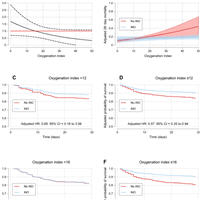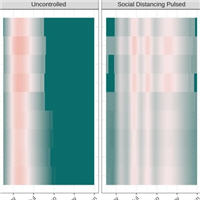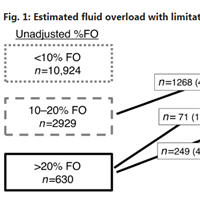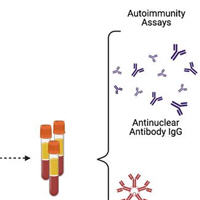Tag: mortality

Severity of Hypoxemia may Explain Indeterminate Results in Pediatric Trials of iNO
Inhaled nitric oxide (iNO) is used for refractory hypoxemia in acute respiratory distress syndrome (ARDS) via vasodilation of pulmonary arterioles to ventilated alveoli, particularly in pediatrics. However, iNO has not affected... read more

Major Trauma Definition Using Different Revisions of the Abbreviated Injury Scale
Injury Severity Score (ISS) 08 ≥ 11 and ISS 15 ≥ 12 perform similarly to a threshold ISS 98 ≥ 16 for in-hospital mortality and ICU admission. This confirms studies evaluating mapped datasets, and is the... read more

d-dimer and Death in COVID-19 Patients
In this multicenter cohort study of critically ill adults with COVID-19 admitted to ICUs across the United States, higher d-dimer was independently associated with a greater risk of death. The added value of d-dimer in... read more

Safety profile of enhanced thromboprophylaxis strategies for critically ill COVID-19 patients
In a cohort of critically ill patients with a high prevalence of thromboembolic events, ET was associated with reduced ICU mortality without an increased burden of haemorrhagic complications. This study suggests ET strategies... read more

Precision Medicine in ARDS
Acute respiratory distress syndrome (ARDS) is a devastating critical illness that can be triggered by a wide range of insults and remains associated with a high mortality of around 40%. The search for targeted treatment for... read more

Association Between Premorbid Beta-Blocker Exposure and Sepsis Outcomes
This study suggests that β-blocker exposure prior to sepsis, especially to noncardioselective β blockers, may be associated with better outcome. The findings suggest prospective evaluation of β-blocker use in the management... read more

Association of Low Baseline Diaphragm Muscle Mass With Prolonged Mechanical Ventilation and Mortality Among Critically Ill Adults
In this study, low baseline diaphragm muscle mass in critically ill patients was associated with prolonged mechanical ventilation, complications of acute respiratory failure, and an increased risk of death in the hospital. A... read more

90 Day Outcomes of COVID-19 Patients in European ICUs
This communication delineates outcomes in COVID-19 patients in the context of ARDS severity, ventilatory management, and variables associated with mortality on a 90-day follow-up for subgroups of patients after ICU admission.... read more

Sunlight Linked to Lower COVID-19 Deaths
Our analysis suggests that higher ambient UVA exposure is associated with lower COVID‐19 specific mortality. Further research on the mechanism may indicate novel treatments. Optimised UVA exposure may have population health... read more

A Scenario Modeling Pipeline for COVID-19 Emergency Planning
Coronavirus disease 2019 (COVID-19) has caused strain on health systems worldwide due to its high mortality rate and the large portion of cases requiring critical care and mechanical ventilation. During these uncertain... read more

Effect of intubation timing on clinical outcomes of critically ill patients with COVID-19
The synthesized evidence suggests that timing of intubation may have no effect on mortality and morbidity of critically ill patients with COVID-19. These results might justify a wait-and-see approach, which may lead to fewer... read more

Non-resuscitation fluid in excess of hydration requirements is associated with higher mortality in critically ill children
Non-resuscitation fluid in excess of hydration requirements is associated with increased mortality in critically ill children. Excess maintenance fluid is a modifiable contributor to this fluid volume. Strategies to reduce... read more

Correlation Between COVID-19 Mortality and Autoantibodies in Patients Treated with Corticosteroids
Auto-reactivity in COVID-19 is increasingly being recognized and may identify a group of patients with inflammation severe enough to result in loss of self-tolerance. Corticosteroids are potent anti-inflammatory agents and... read more

Intubation Practices and Adverse Peri-intubation Events in Critically Ill Patients
In this observational study of intubation practices in critically ill patients from a convenience sample of 197 sites across 29 countries, major adverse peri-intubation events—in particular cardiovascular instability—were... read more




